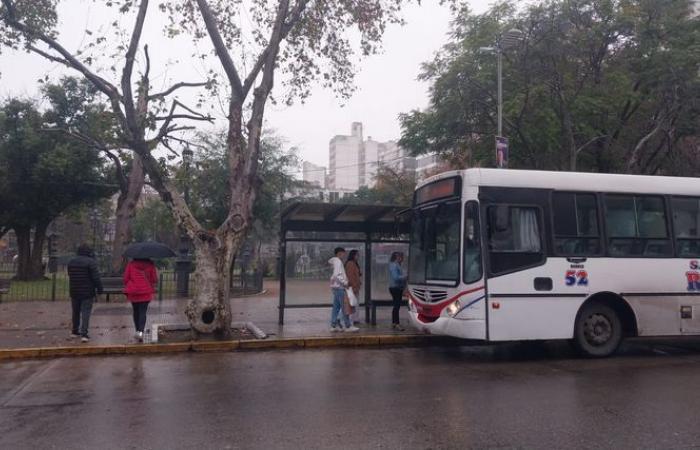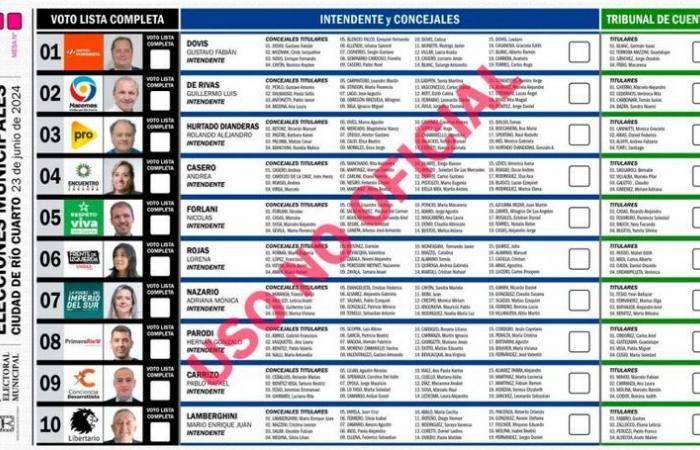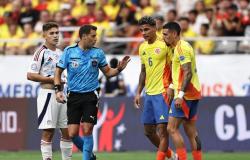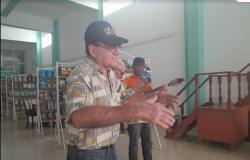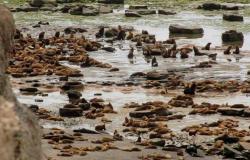Río Cuarto will concentrate the gaze of the political country this Sunday. The renewal of the mayor, for several years completely detached from other electoral processes, exceeds the local level and will project its results on the province and the Nation.
The ruling party’s candidate, Guillermo Rivas, showed up to vote around 10:50 at the Educational Center. Hebe SM de Duprat, while around 10:44, Mario Lamberghini, Libertarian Party candidate, cast his vote in the IPET Renato De Marco.
/Home Embedded Code/
/End Embedded Code/
Adriana Nazario, the first to cast her vote
At the Leopoldo Lugones Educational Center, table 3607, the former minister and former national deputy cast her vote, being the first of the candidates to do so.
The candidate for La Fuerza del Imperio del Sur, Adriana Nazario, voted at the Leopoldo Lugones Educational Center, in Barrio Las Delicias.
Regarding election day, the accountant expressed “If there is good participation, democracy is reinforced. “I always hope for the best, now we are going to spend the day with the family and later we are going to wait for the results in our bunker.”
Regarding the development of the elections, he stated: “I have been told that everything is normal, except for some delays at some tables, but nothing strange.”
Asked about the last days of the campaign, she responded: “Today is a day to enjoy. You witnessed what it was like, there is no need to add anything more.”
An expectant gray Saturday
The eve of the election was dyed gray. Fog surrounded the Municipal Palace early Saturday. The drizzle stopped the usual intense vehicular and pedestrian movement, while the bars gathered patrons who shared their interest in scrutinizing what happens on Sunday, what that holds for Río Cuarto in the coming years, relegating for a while to the Copa América and other issues on the Saturday coffee agenda.
Meanwhile, the morning was used for connectivity adjustments in the so-called Situation Room, the place that the electoral judges will occupy, and configuring the screen that they will use to follow the on-time upload of the count.
The company that won the tender and will be in charge of the electoral service will be Grupo MSA Sociedad Anónima that will work with Correo Andreani everything that has to do with the logistics and deployment of ballot boxes, which began at 1:00 p.m. from the plant located on route A005.
What is chosen
The mayor, regular and alternate councilors and members of the Court of Accounts are defined.
Who votes*
Registered: 138,880 over 16 years of age, Argentines and foreigners.
There are 3 electoral circuits:
• Center: 76,980 voters.
• North Band: 32,571
• Alberd neighborhoodi: 28,927
• Foreign table: 338
Where and at what time do you vote*
There are 46 voting centers enabled between 8 a.m. and 6 p.m.
What system is used
Single ticket.

What time are results expected*
The first data will be available around 7:30 p.m. The company in charge of the electoral service should provide “significant” data at 7:30 p.m. to start transmitting. At the same time, also by contract, at 8:30 p.m. at least 70% of the tables counted must be loaded.

* Fountain: Fernando Pérez, secretary of the Electoral Board.
The Chain 3 operation
Chain 3 will broadcast a special program this Sunday, hosted by Sergio Suppo, with the participation of Víctor Rapetti, Fernando Barrionuevo, and Federico Borello and analysis by Julio Perotti.
The program will go from 7 to 10 p.m. Chain 3 Río Cuarto (FM 90.7); while, in Córdoba, the broadcast will be at the same time on Radio 3 (FM 100.5). T
You can also follow, with all the coverage throughout Sunday, by Cadena3.com.
The sense of opportunity
During the electoral campaign, there were questions about the date chosen for these elections, given that there is a long weekend and this generates fear of low voter participation.
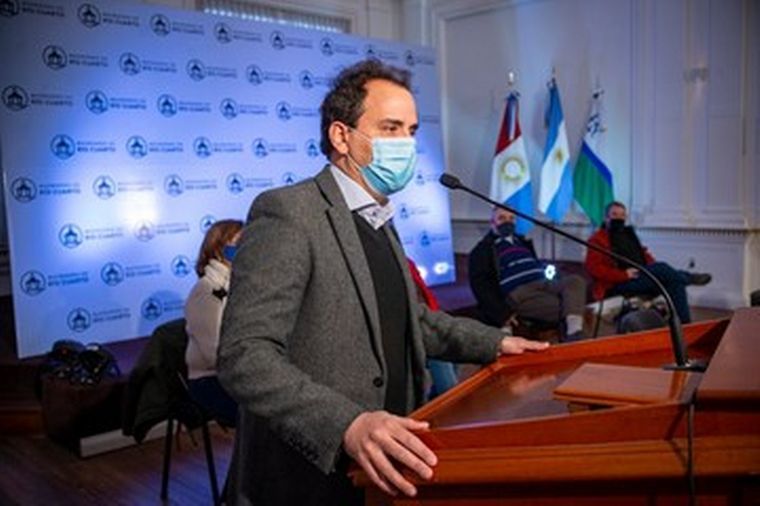
In 2020, the vote was taken in full isolation due to the pandemic. In fact, the date was moved twice, until it was set for November 29. That day, in which Juan Manuel Llamosas (photo) achieved his re-election, it is estimated that half of the voters went to vote.
Who are the candidates for mayor?
1) Gustavo Dovis – Humanist Party
2) Guillermo De Rivas – We make United for Río Cuarto
3) Rolando Hurtado –PRO
4) Andrea Casero – Córdoba Neighborhood Meeting.
5) Nicolás Forlani -Respect and Viva Río Cuarto
6) Lorena Rojas – Left Front and Workers Unity
7) Adriana Nazario – The Strength of the Empire
8) Gonzalo Parodi – First Río Cuarto.
9) Pablo Carrizo – Developmental Consciousness
10) Mario Lamberghini – Libertarian Party.
Campaign closures
/Home Embedded Code/
/End Embedded Code/
Who’s who among the main candidates
Guillermo de Rivas
Candidate of Hacemos Unidos for Río Cuarto. He was an official of the current mayor Juan Manuel Llamosas. He has the official endorsement of the force at the provincial level, led by Governor Martín Llaryora, who sent ministers and officials in the last few hours to reinforce the final stage of De Rivas’s campaign.
/Home Embedded Code/
/End Embedded Code/
AlliancesIn Río Cuarto, Hacemos Unidos replicates the provincial scheme: it is made up of the Socialist Party, Independent Neighborhood, Republican Liberal Meeting, Action for Change, Gen. Party, Intransigent Party, Podemos, Partido del Campo Popular, Federal Front of Solidarity Action and Party Federal Commitment.
History. Both Llamosas and De Rivas are children of two historic Peronist leaders. Esteban “Chachi” Llamosas, first candidate for mayor of Peronism in the rebirth of democracy. He was then defeated by Miguel Ángel “Chicharra” Abella.
De Rivas is the son of Juan Manuel de Rivas, with a long career in Peronism and an expert in municipal law issues.
Adriana Nazario
The businesswoman, former provincial minister and former partner of José Manuel de la Sota, plays separately from official Peronism, which worries Hacemos Unidos por Córdoba because it divides votes in that force. In fact, there were attempts to convince her to drop her candidacy, but they were unsuccessful.
/Home Embedded Code/
/End Embedded Code/
Alliances. His list is confirmed by an agreement between the Integration and Development Movement, Youth Project, Solidarity Party, Free Movement of the South, Open Policy for Social Integrity (PAIS) and Faith Party.
Gonzalo Parodi
Known as “Pampa”, for being a native of that province, the radical candidate, who leads the Primero Río Cuarto ticket, takes advantage of the presence of two Peronist adversaries to present himself as “a change of era.” He came to the nomination after an internal bid with Gabriel Abrile, although they later sealed the unity and go together.
/Home Embedded Code/
/End Embedded Code/
alliance. Parodi included judges and the Civic Coalition on his list, but he is separate from the PRO (he has his own candidate, Rolando Hurtado), which sealed the death of Together for Change in Río Cuarto.
Mario Lamberghini
Liberta Avanza formed an alliance but later decided not to present candidates. Before that, the leader Mario Lamberghini had already anticipated his nomination for the Libertarian Party.
/Home Embedded Code/
/End Embedded Code/
Transition
There are only 9 days between this Sunday’s election and the inauguration of the new mayor.
A historic municipal headquarters
The Municipality of Río Cuarto operates in the Mojica Palace, located in Pasaje de la Concepción, surrounded by General Paz, Hipólito Irigoyen, Belgrano and 25 de Mayo streets, in the heart of the city, one block from Plaza General Roca .
On September 16, 1930, the Deliberative Council ordered the construction of a new municipal headquarters, three economic markets, the municipal slaughterhouse, public assistance, among other works that changed the configuration of the city.
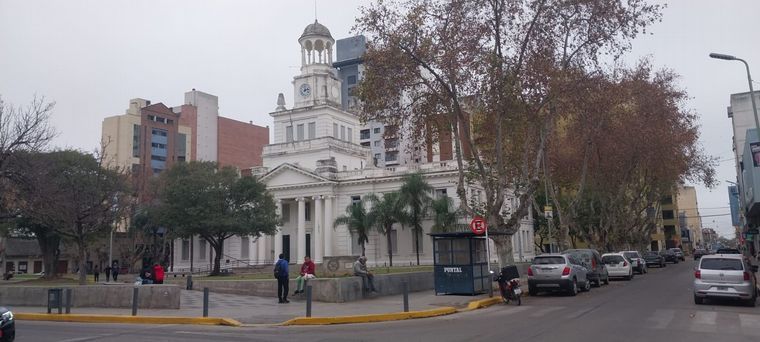
The Palace of Mójica is in a neoclassical style, it responds to an idea by the architect Alejandro Bustillo (author of the Banco de la Nación Argentina and the Rambla de Mar del Plata), concretized in the plans by the architect Carlos Zambruno and the engineer Santo Cocco.
It was officially inaugurated on May 25, 1932, under the management of Vicente Mójica.
Report: Víctor Rapetti. Edition: Julio Perotti.

